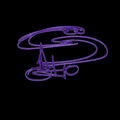Template:Selected anniversaries/June 10: Difference between revisions
No edit summary |
No edit summary |
||
| Line 26: | Line 26: | ||
||1838: William Leonard Hunt born ... The Great Farini, was a well-known nineteenth- and early twentieth-century Canadian funambulist, entertainment promoter and inventor. Pic. | ||1838: William Leonard Hunt born ... The Great Farini, was a well-known nineteenth- and early twentieth-century Canadian funambulist, entertainment promoter and inventor. Pic. | ||
||1887: Vladimir Ivanovich Smirnov born ... Russian mathematician who made significant contributions in both pure and applied mathematics, and also in the history of mathematics. Pic. | ||1887: Vladimir Ivanovich Smirnov born ... Russian mathematician who made significant contributions in both pure and applied mathematics, and also in the history of mathematics. Pic search: https://www.google.com/search?q=Vladimir+Ivanovich+Smirnov | ||
||1895: Wilhelm Tolmé Runge born ... electrical engineer and physicist who had a major involvement in developing radar systems in Germany. Pic: https://alchetron.com/Wilhelm-Runge | ||1895: Wilhelm Tolmé Runge born ... electrical engineer and physicist who had a major involvement in developing radar systems in Germany. Pic: https://alchetron.com/Wilhelm-Runge | ||
Revision as of 07:19, 13 February 2019
940: Mathematician and astronomer Abū al-Wafā' Būzjānī born. His Almagest will be widely read by medieval Arabic astronomers in the centuries after his death.
1278: Mathematician Yang Hui uses his famous Triangle to defeat the Forbidden ratio in single combat.
1793: French Revolution: Following the arrests of Girondin leaders, the Jacobins gain control of the Committee of Public Safety installing the revolutionary dictatorship.
1836: Physicist and mathematician André-Marie Ampère dies. He was one of the founders of the science of classical electromagnetism, which he referred to as "electrodynamics".
1972: Rhizolith Group debuts new work based on the history of high-energy literature.
2018: Chromatographic analysis of Purple Racer reveals "at least five, perhaps as many as nine" previously unknown shades of violet.





